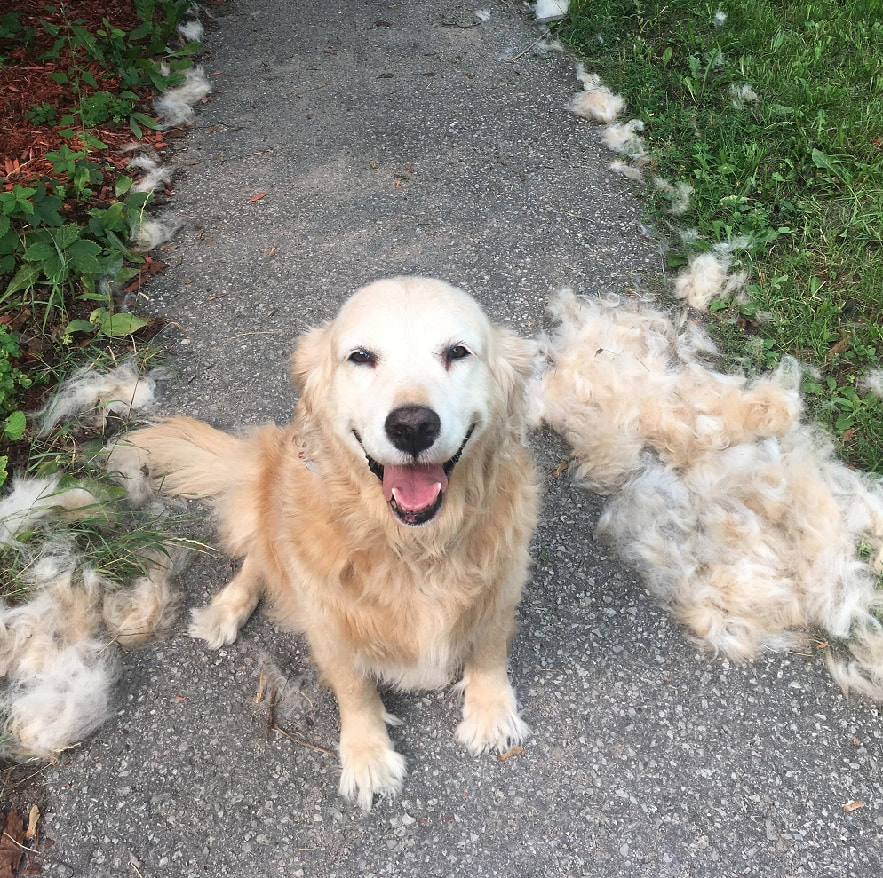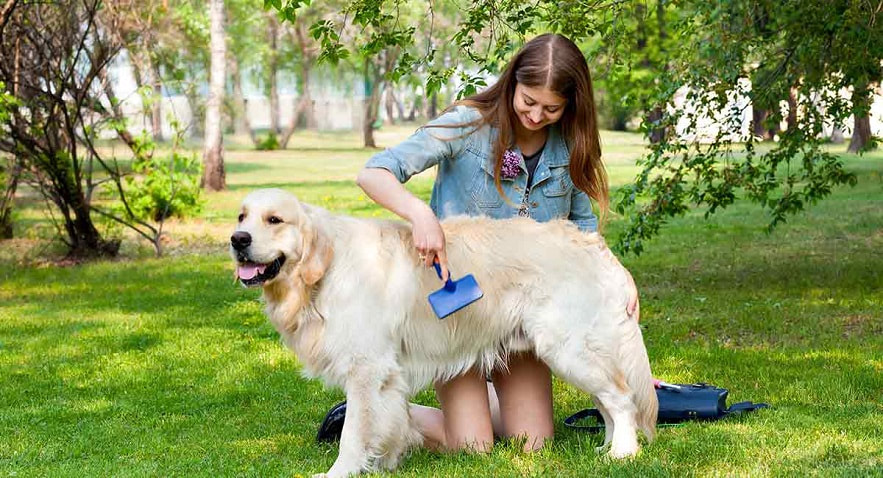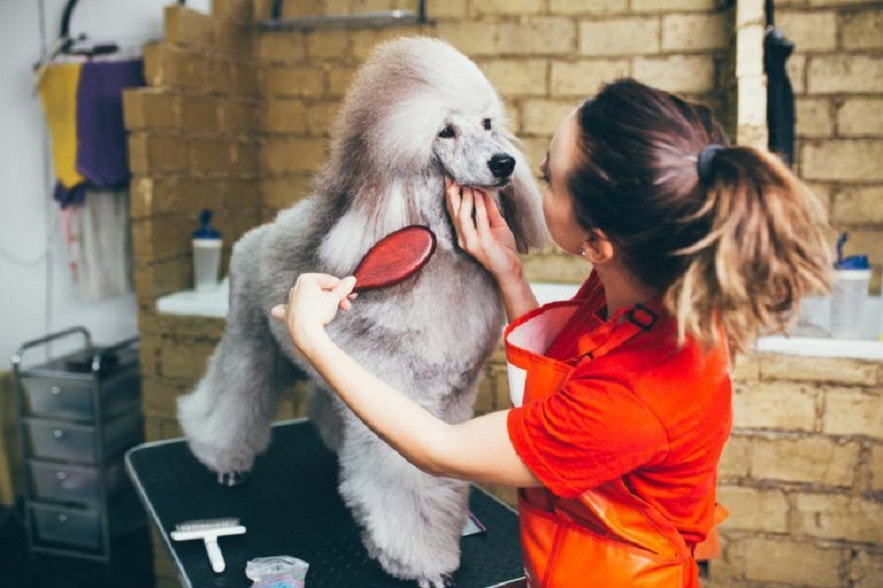Doing fun activities with your dog is great for bonding but taking care of its coat can also be a good bonding time. Not only does brushing your dog's coat make for a great bonding experience it is also quite beneficial for its coat too. You can easily spot bumps or parasites and help distribute natural oils in the coat as well as making your dog look good. By brushing your dog's coat you also reduce shedding, prevent painful mats and help your dog stay comfortable. But in order for all of this to take place you need to know what type of brush is going to be ideal for your dog and the proper way of using it.
Types of Brushes
Slicker
This brush comes with either a flat or curved head and rows of thin wire pins that help remove loose fur and detangle the coat. A slicker dog brush can be used with every type of coat.
Double-Sideds
A double-sided brush is exactly what you'd expect it to be. This is also a brush ideal for all types of dog coats since it acts both as a pin and a bristle brush. A double-sid
Bristle
Bristle dog brushes are finishing brushes used to smooth out fur an spread skin oils. This type of brush is recommend for all types of dog coats as it makes for a shiny coat.
Undercoat
Some dogs shed in clumps which is why you need an undercoat rake brush to make the removal of fur more effective. This brush has wide teeth which pass through the topcoat and pull out dead undercoat hair.Just look for longer bristles if your dog has long hair and vice versa.ed brush is mainly used for medium to long haired dogs since the pins aren't that effective on short coats.
De-Shedding
If your dog sheds a lot of fur to the point where it's everywhere in your apartment you need a de-shedding dog fur brush. This tool helps remove a lot of loose and dead undercoat hairs before they fall on the ground in just one session.
How to Properly Brush Your Dog
- Different parts of your dog's body will require a different approach when brushing. The area you need to start brushing first is the top of your dog. Start by gently grooming the head by brushing down and out. If your dog has long hair lift the coat and brush underneath the piece of hair you just lifted.
- Ear hair needs to be groomed carefully too. If there are knots of fur use a washcloth with detangler solution on it to help you comb out the tangles. Next, smooth out your dogs neck ruffs with an undercoat rake after you've brushed it with a soft slicker dog brush. While short hair on the legs doesn't need to be brushed, if your dog has long hair there use a detangler solution, mat splitter or a comb to comb it out.
- Proceed by grooming the belly next with a slicker brush against the lay of the hair. Don't pull on mats here as your dog's belly skin is sensitive. Continue brushing your dog around the sides and up the back. This is the easiest part as you just need to brush against the lay of the fur. Proceed by brushing the back of your dog but be extra careful around its private area. If your dog's tail is long and furry use a comb and if there are mats use detangler solution it three is short hair you are done.
Brushing Different Types of Coats
Short & Wire
Maintaining this type of coat requires brushing and combing in layers with a slicker brush and a medium/fine tooth comb. This needs to be done twice a week and professional grooming needs to happen every 6 to 8 weeks.
Short & Smooth
Since this type of coat has very little to no undercoat you'll need to use a bristle brush and a hound glove once a week to keep it healthy. Brush in the same direction the coat grows to help remove loose hair and spread skin oils. You can use a spray-on conditioner to keep the coat shiny - professional grooming will be needed 4 to 6 times a year.
Short & Double
This type of coat has a soft undercoat and a straight or wavy topcoat which is why you'll need a slicker brush, undercoat rake, medium/ fine tooth comb and a furminator. Maintaining this coat is done first by brushing it in the direction of hair growth and then combing it to remove the loose hair. Grooming needs to happen twice a week with an increase during spring and fall and professional grooming is usually needed 6 to 8 times a year.
Long & Silky
Although this type of coat does not have an under coat you'll need to groom it more often. Use a slicker brush and a medium/ fine tooth comb first by removing tangles and mats and then combing the entire coat in the direction of hair growth 3 to 4 times a week. Professional grooming is going to be needed every 4 to 6 weeks.
Long & Coarse
This type of coat requires a pin and slicker brush as well as a medium/ fine tooth comb. Brush in layers from the skin outwards and then comb back through the coat. Do this 3 to 4 times a week with professional grooming every 4 to 6 weeks.
Long & Double
Grooming a long and double coat needs to be done 2 to 3 times a week with a slicker brush, medium/ fine tooth comb and a undercoat rake. You'll need to take care of one section of fur at a time by brushing from the skin and out. When you remove any mats, thoroughly comb next to the skin in an outwards motion. Professional grooming for this type of coat needs to be done 6 times a year.



